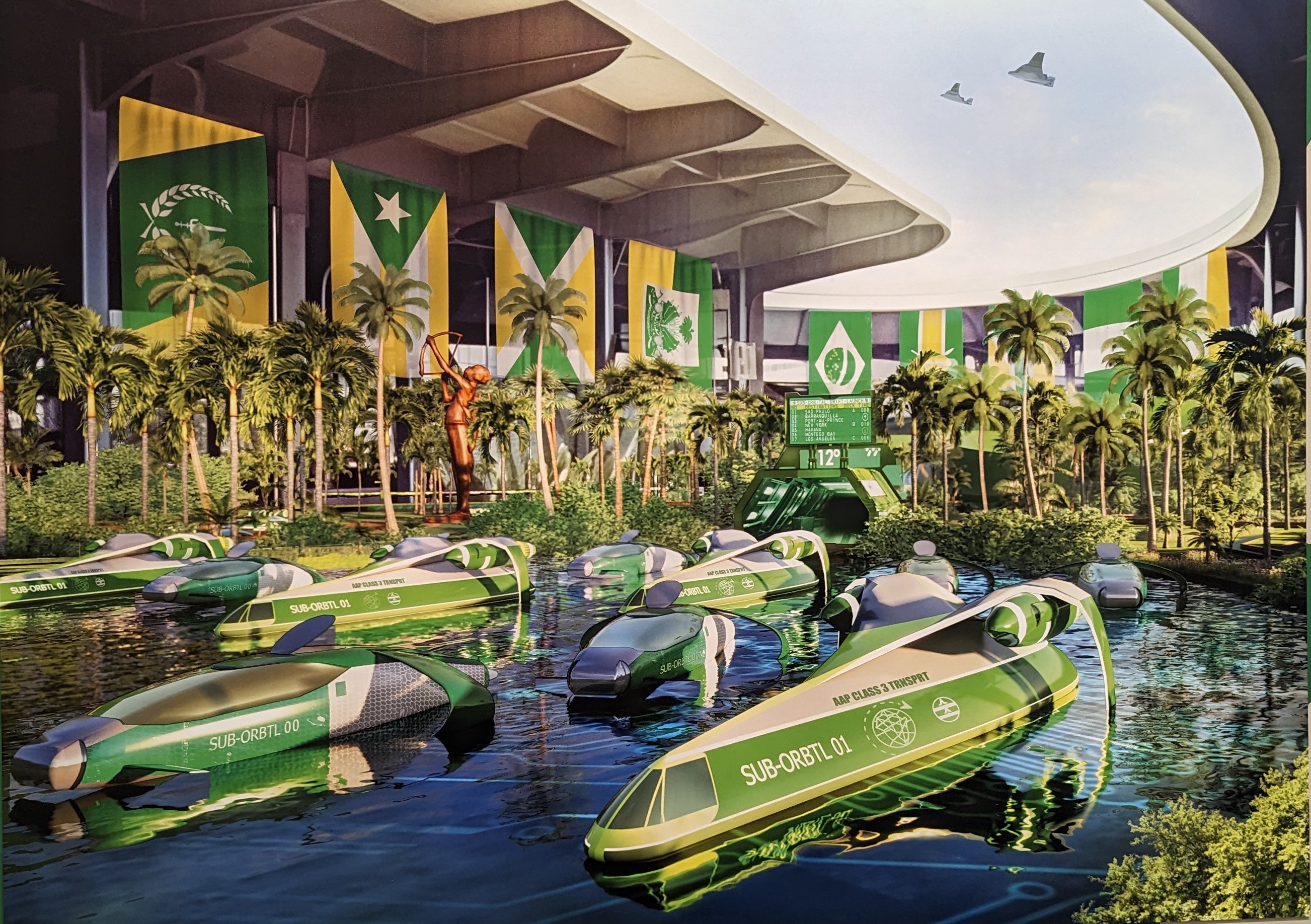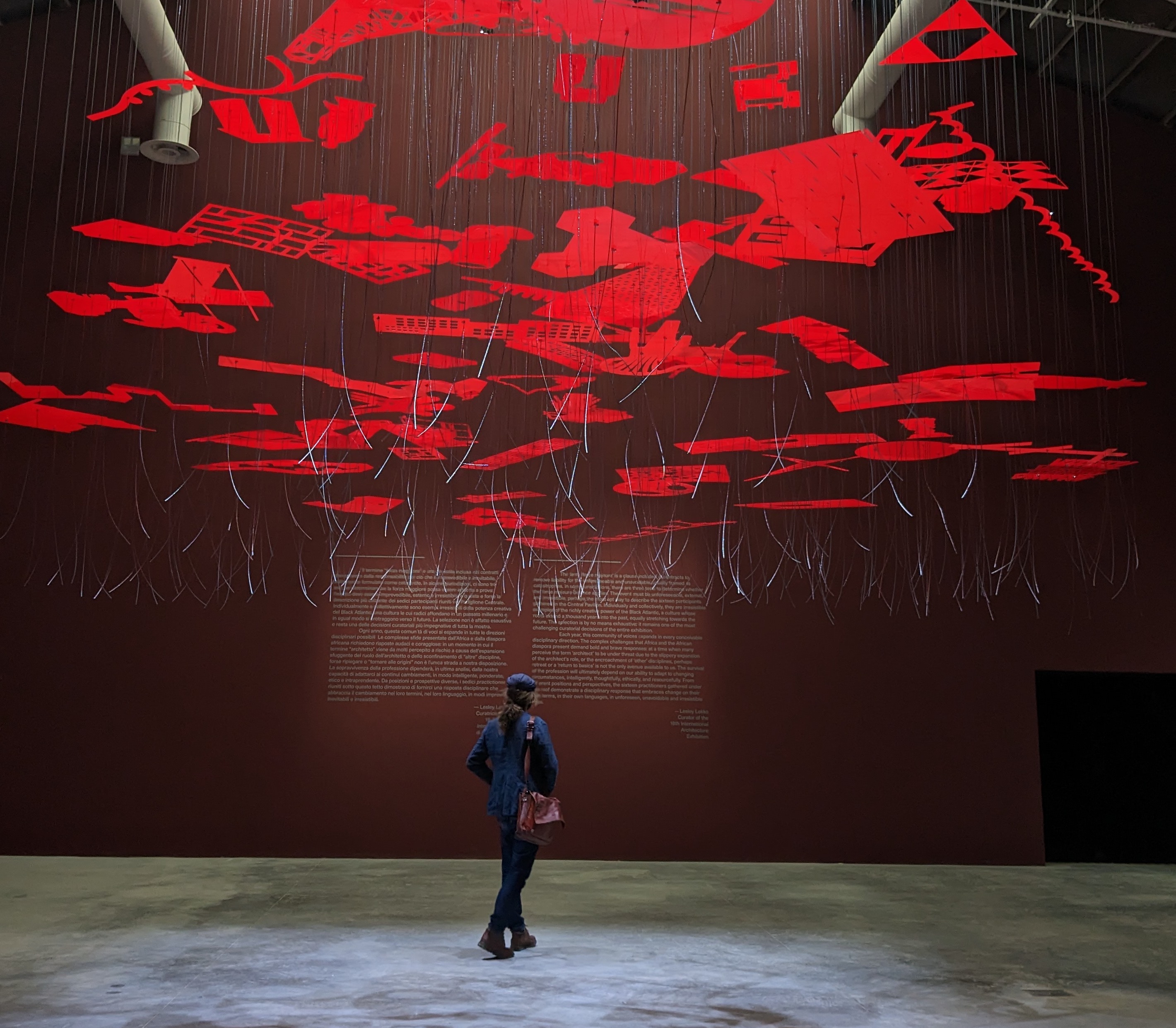The new front line: Notes from the Venice Biennale
Ghanian artist and poet Kwame Aidoo reports his impressions from the climate change Biennale that is bringing African voices into the heart of the architectural mainstream - despite obstruction from Italy's own government.
For the first time in its history, the Venice Architecture Biennale is being led by Africa, its diaspora and the global majority - everything from decarbonisation to decolonisation is being examined, not just architecture. The Ghanaian-Scottish curator and founder of the African Futures Institute, Lesley Lokko, offered up a vision that drew over half of the exhibition's 89 participants from Africa or the African Diaspora - with the added focus of ensuring the gender distribution was 50/50.
It was therefore especially galling to see how, in real time, the Italian government exhibited its own racist visa regime at the expense of the Biennale. While some new European Visa programs are curated to attract talented folks to throw themselves on brain-drain lane, the Italian government dismissed three Ghanaian curators from entering Italy in order to attend the Biennale. “Not all teams are equal,” Lokko remarked, about the unfounded concerns they might abscond and illegally remain in Italy.
Ghana at the Biennale
The curators were part of the team of collaborators who had put in about 18 months of preparation work towards the exhibition, and already had lodging and return flights booked.
There are those shushed in the shadows of the past even though they pioneered strategic locally-focused inventions and there are those amongst us who were recently issued rejection slips at Accra's Italian embassy. On the topic of silencing, it is imperative to celebrate greats like John Owusu Addo, Samuel Opare Larbi, Daniel Sydney Kpodo-Tay, Alero Olympio and the many unknown names. Tropical Modernism: Architecture and Power in West Africa (curated by Christopher Turner, Nana Biamah-Ofosu and Bushra Mohamed) does well to redirect the necessary attention to the narrative.
On the other hand, at the interphase between the past and present, Courage Dzidula Kpodo combusts excavated visual elements from Ghana’s independence era for the reinterpretation of architecture as identity. With Postbox Ghana, Kpodo and fellow collaborators give voice to the layers through extensive research into pre and post-independence archival material: often unknown photographers’ works.
With a site-specific installation along the upper support structure of the Gaggiandre, Serge Attukwei Clottey weaves everyday Accra inspiration into stimulus from the politics of trade, exchanges and migration to channel with Time and Chance.
It’s a given that Ibrahim Mahama’s Parliament of Ghosts is not new, but in the context of the Biennale it further intensifies the exigency for excavation, co-existence and not sitting on the fence. Like Kpodo’s work, independence era connections are made, and in addition memories pivot conceptual and philosophical standpoints for the drawing of new perspectives.
Furthermore, Low Design Office’s Enviromolecular spawns striking impressions for engaging spatial politics veneers towards a harmonious environmental balance, while examining the journey of today’s architect, for proposing future alternative pathways.
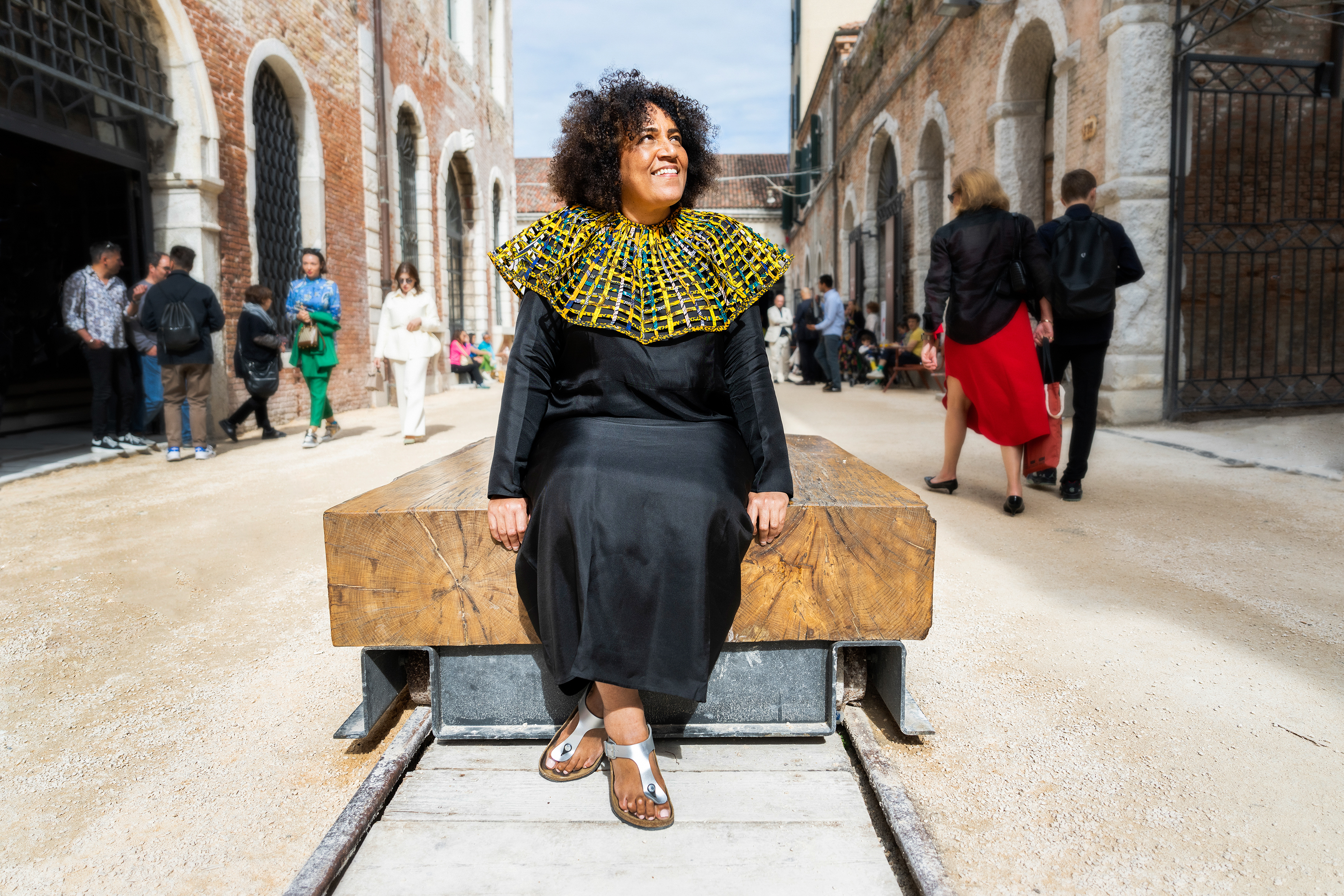
Decolonise to decarbonise and back again
The entangled sitch of architecture in light of contemporary crises can only be solved through new forms of collaborations and through deliberately studied interdisciplinary models and designs for the future. For Lokko, there has always been a gap between architecture as a profession and architecture as a discipline; the latter being the broader field. Colonial prints are laid bare in evidentiary practices, propelling the prolific writer and educator to examine the complicated contexts “beyond architecture that deals with the building of buildings” by lifting the layers for dialogues “about resources, ways of thinking, about politics, ways of thinking about the world”.
Africa remains a significant frontier with potentials of untapped resources, and the globe’s need for geopolitical realignment, would have to stop Europe and the US from mulling over Africa as the post-Cold War yielding pad.
Postdoctoral Researcher in Politics of Architecture at SOAS, University of London Kuukuwa Manful argues that putting Europe at the centre of African stories is a choice that favours colonial histories. Kuukuwa emphasises that “European architects operated as though the continent were a blank slate, devoid of pre-existing architecture worthy of note.”
Sinking foundations, floating treasures: The Venice of our times
The graph of the average carbon dioxide (CO₂) levels in the atmosphere worldwide from 1959 to 2022 is a playground slide and the 2015 Paris Agreement goals are not in the ballpark just yet. Buildings are currently responsible for 33% of global energy consumption and 39% of greenhouse gas emissions. The Carbon Leadership Forum, cites projections that the world’s building floorspace will double by 2060.
In Venice, housing is becoming increasingly unaffordable, partly due to the Biennales which happen to be central with the touristification. Natural Hazards and Earth System Sciences in a 2021 report, suggested that the average sea level could be anywhere from 17cm to 120cm higher in Venice by 2100. Trailing the vibrant footpaths over the watery maze of 120 islands into the buzzing squares bordered by largely Gothic structures with white Istria stone waterproof basements impregnated with sea water salt, and mostly lacking septic tanks, you barely sense that someday Venice might have to succumb to its sinking foundations.
As sea levels will continue to rise over the coming decades due to the ongoing melt of the Antarctic, Greenland ice sheets and mountain glaciers, will Venice be hit as hard as low-lying Jakarta? Do manageable "acqua alta" events give some squeeze of assurance that the frequency and intensity of coastal flooding might not topple Venice?
In November 2019, the Italian city with a population of 261,905 (2017) suffered its second-worst flooding event after the worst ever flooding of 1966. More than 80% of the city went under water with an estimated €1bn euros (£0.9bn/$1bn) worth of damage, according to Luigi Brugnaro, the Mayor of Venice. Since 1923, water levels have reached 150cm (59in) or more on only 10 occasions, but five of those have been in the last three years.
The Biennale's work towards carbon neutrality
The main aim of the Biennale is to create a platform for architectural solutions to contemporary drawbacks of the society, and since La Biennale di Venezia has achieved an international standard PAS2060 carbon neutrality certification, it brings to light the practically-minded aspiration to contribute to the reduction of both operational and embodied carbon.
The Biennale visitor misses the scenery when tons of waste exhibition materials are conveyed by hand and boat across Venice. Arch+, Summacumfemmer and Büro Juliane Greb’s "Open for Maintenance – Wegen Umbau geöffnet", reveals a unique “action framework for a new building culture” by using leftover material and “spolia” from more than forty national pavilions and exhibitions of the Biennale Arte 2022.
While climate expert Dario Camuffo attempts to trace the Venice water levels in the paintings of Canaletto and Bellotto, with the city holding on to the dam system MOSE as a prospective answer to extreme flooding, the Biennale rings up the curtain on architecture’s untold possibilities for action in designing socio-ecological cities. Fortunately, be it the curation, projects or texts, light is shed on environment-friendly perspectives divulging climate concern.
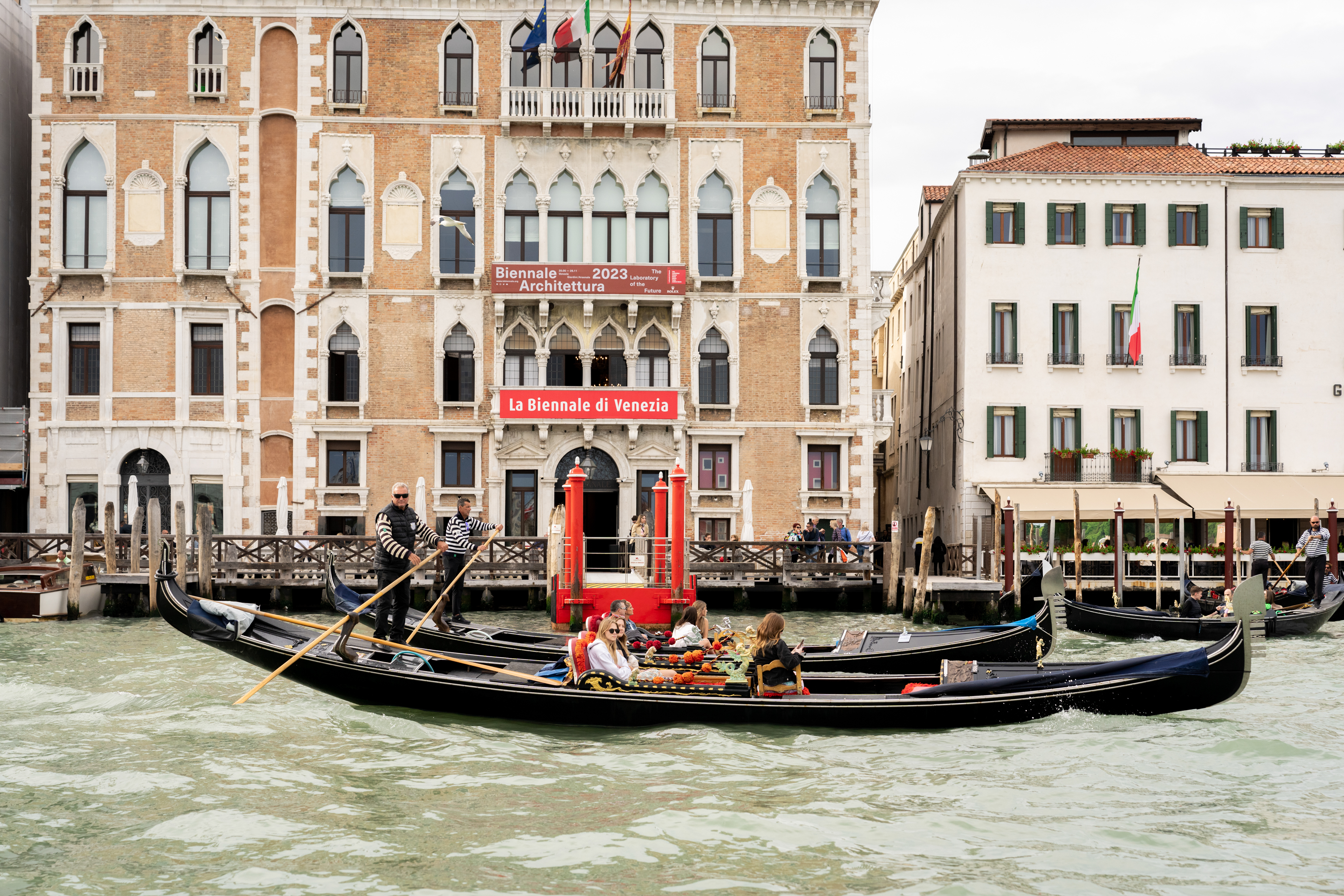
Towards the rooted future: From Butre to Busua
Two years ago in July, I visited a friend who owns a bar by the beach in Butre. To my dismay, the flood tides had collapsed his entire structure. While writing this piece, I called to check up on John; a community leader of the coastal town where the 1656 Dutch Fort Batenstein is situated. He was cheerful on the phone when he quipped about his urgent lust to venture abroad, but when his voice cracked, he started narrating how the main bridge which connects the township of Butre over a lagoon to a beach front property area had been consumed by the sea’s fetching rip currents.
Busua, where Juergen Strohmayer and Glenn DeRoché’s Surf Ghana Collective lodge can be found, lies further West barely 2km along the coast from Butre. As part of Lokko’s Curator’s Special Project ‘Guests from the Future,’ the Accra-based architects presented Plugin Busua, which “juxtaposes architectural fragments with a contextual 14min film footage” by artist Nii Obodai. A new multipurpose canopy, creating a social space over an adapted building supported by sculptural columns, animated by old ficus trees. By substituting imported formwork with local raffia and reducing cement through local laterite mixtures, the project collocates playfulness with functional, climatic with urban brutalism; a futuristic picture fixated on freedom of frisking flora inside community.
The sea eats our lands: Ghana's eroding poetry in motion
Here stood our ancestral home:
The crumbling wall marks the spot.
Here a sheep was led to slaughter
To appease the gods and atone
For faults which our destiny
Has blossomed into crimes.
The poetry of Kwesi Brew (1928-2007) brings time, nature and the supernatural in dialogue to digest the anxieties of the modern African while drawing upon the sights and sounds of rural and urban memory-scapes. In The Sea Eats Our Lands, the Cape Coast born poet captures how marine erosion is causing the gradual decline of Keta, a historic coastal Ghanaian town, with a tightly locked sequence of three stanzas. On average, flooding affects around 45,000 Ghanaians annually. Half of Ghana’s coastline is vulnerable to erosion, which affects agriculture and land, labour productivity, air and water quality.
There my cursed father once stood
And shouted to us, his children,
To come back from our play
To our evening meal and sleep.
The clouds were thickening in the red sky
And night had charmed
A black power into the pounding waves.
Assuming Brew were alive today, would he be shocked or indifferent about how the entire continent of Africa is responsible for less than 4% of the world’s greenhouse gas emissions, but huge chunks of rocks, soils and sands still succumb to local sea level rise, strong wave action and coastal flooding? The World Bank Group’s recent Country Climate and Development Report (CCDR) for Ghana estimates that if urgent climate actions are not taken, income could reduce by up to 40% for poor households by 2050 due to climate imbalances.
Here once lay Keta.
Now her golden girls
Erode into the arms
Of strange towns.
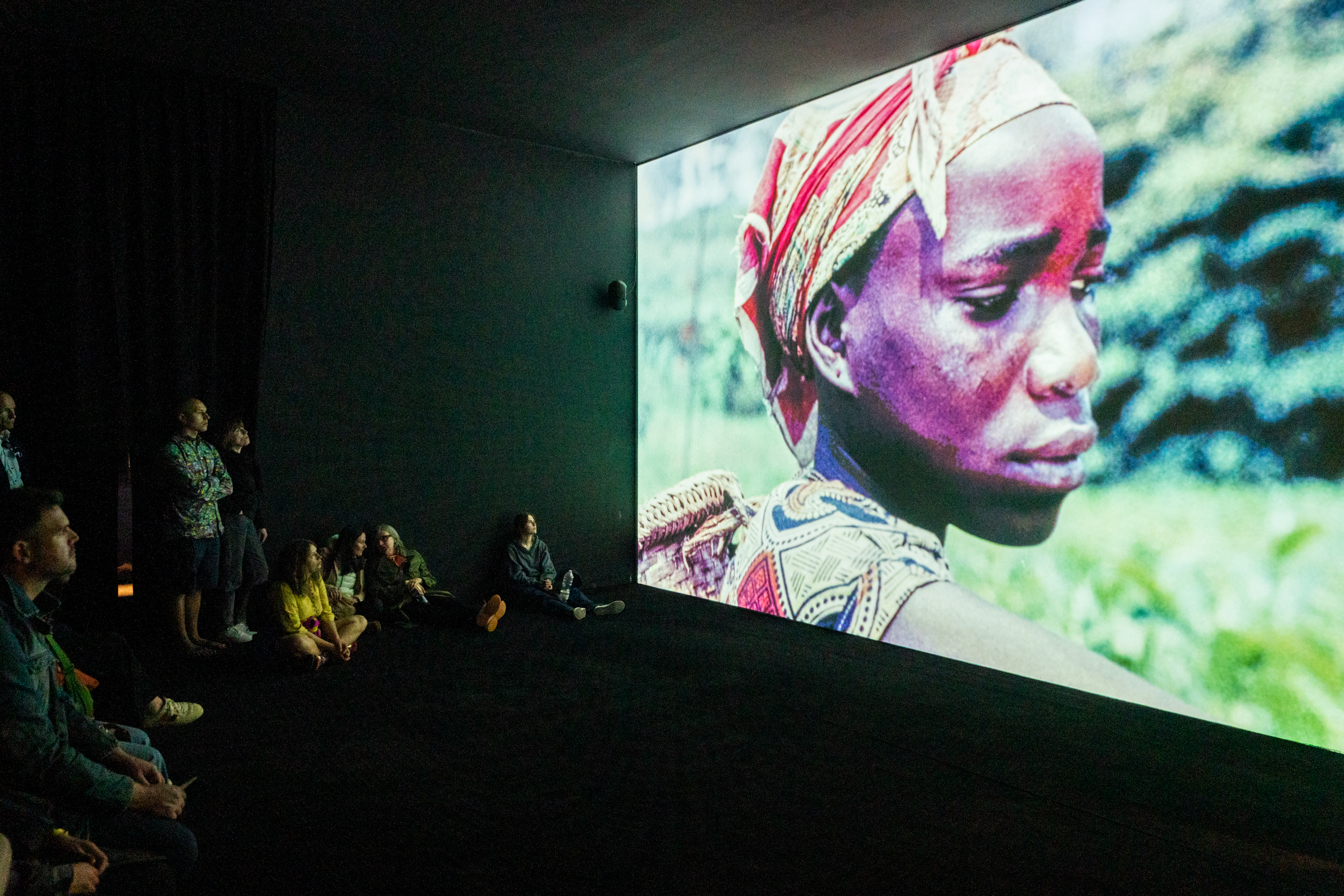
The Lead is now on Substack.
Become a Member, and get our most groundbreaking content first. Become a Founder, and join the newsroom’s internal conversation - meet the writers, the editors and more.


